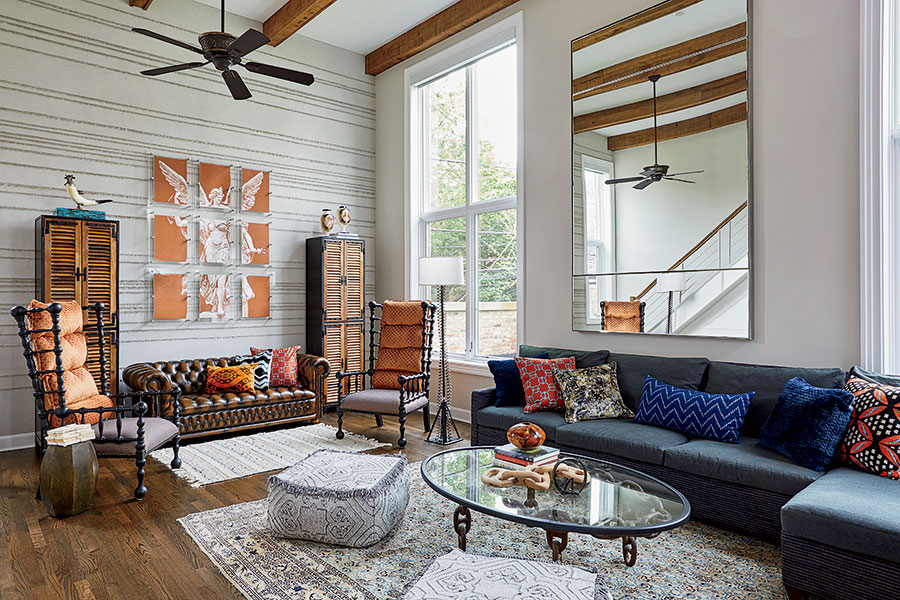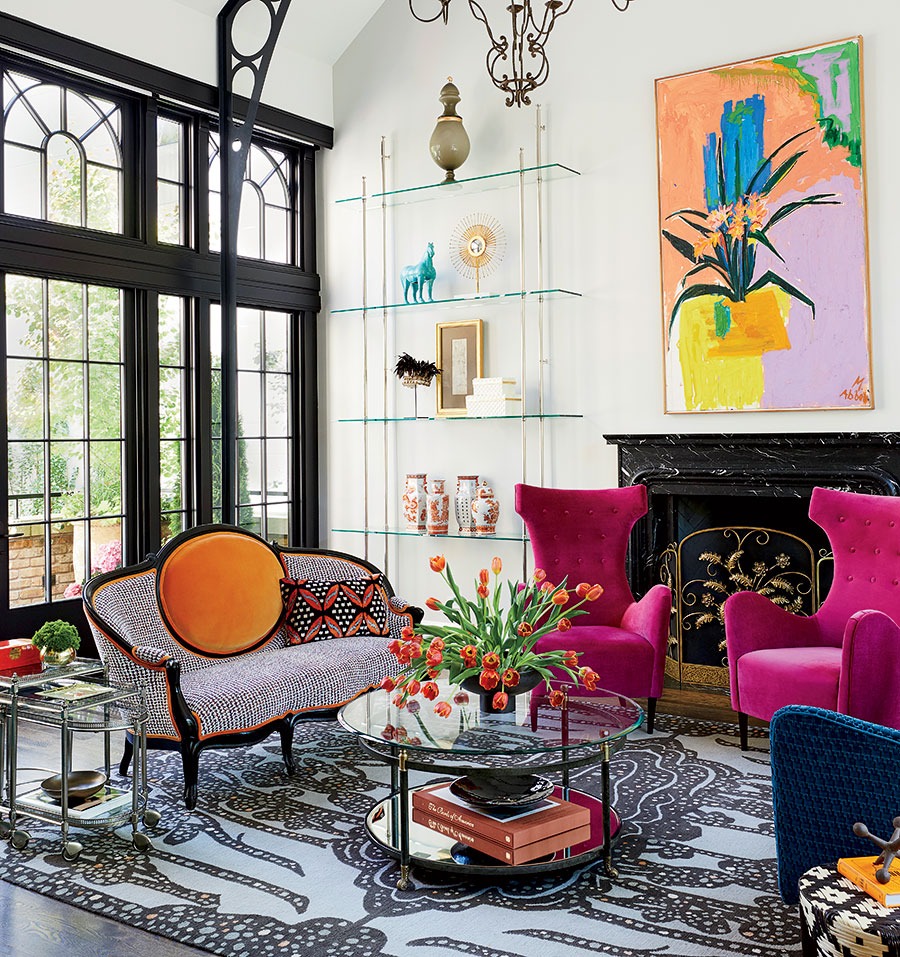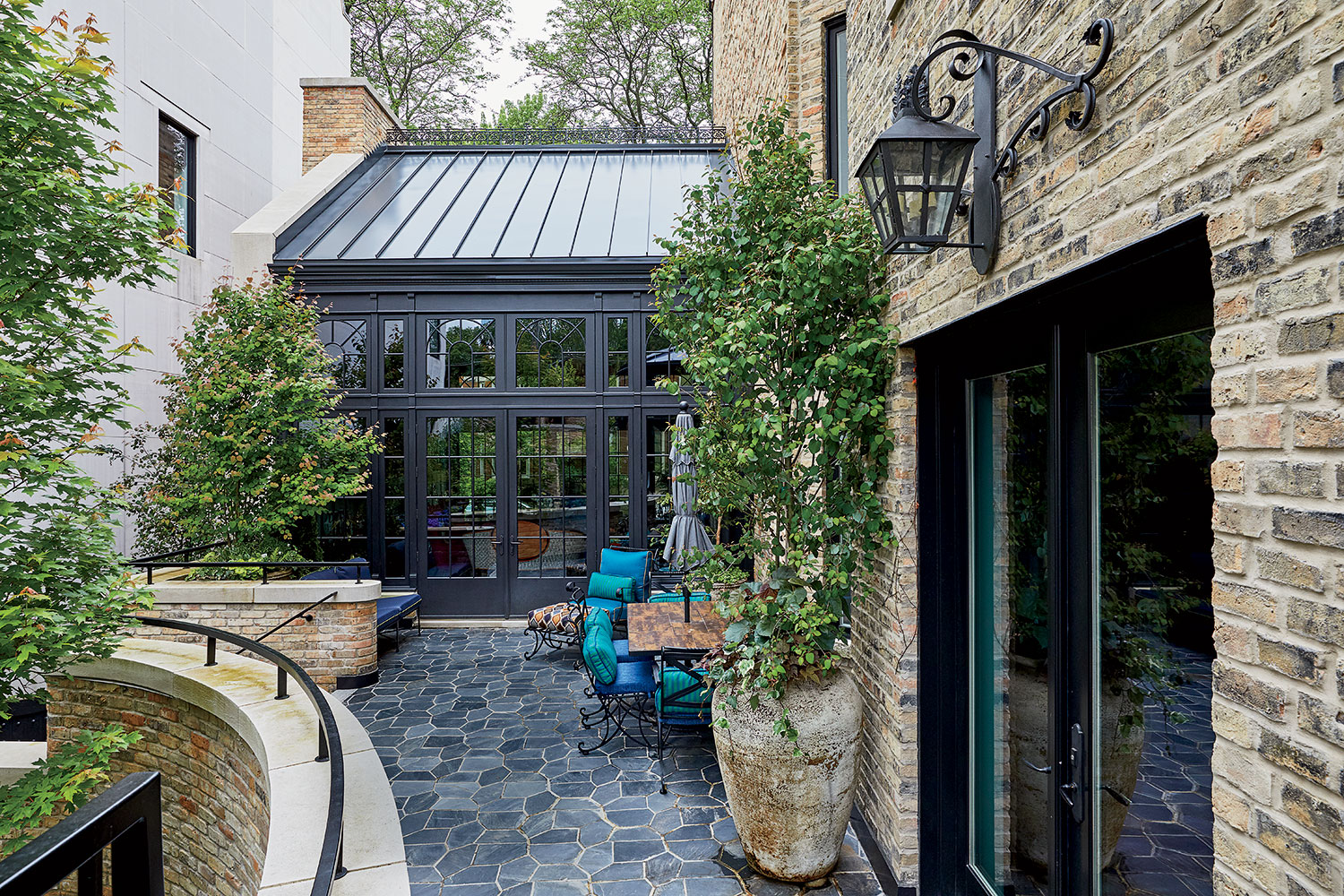Time is rarely kind. What was once the height of fashion is, sooner or later, not. That was the case with this handsome 1880s Lincoln Park greystone, which had gotten a very of-the-minute redo in the 1990s. “It was all bleached wood and stainless steel,” recalls designer Julia Buckingham, who spent years turning the place around for a professional couple with two young children. “Everything intrinsic to the house in terms of its original appeal had been wiped away.”
Buckingham and her clients weren’t out to orchestrate a historic restoration, but the slick touches of the recent past had to go. Floors were warmed up with a darker stain. A chrome fireplace surround was replaced with brick. The contemporary kitchen was toned down with a diamond-patterned tile that Buckingham ran across an entire wall. When it came to furnishings, she combined French curves with linear forms for a transitional look propelled by bright colors. “Julia’s ‘Modernique’ take on things — modern meets antique — really defines the spirit of the house,” one of the homeowners says. “The dining room table is very modern, but the wall covering reminds me of Monet’s water lilies.”

Like the previous owners, who had linked a carriage house to the home, the current residents expanded the property by adding two conservatories. One, attached to the side of the house and visible from the street, contains a living room. The other, joined to the kitchen in back, serves as a breakfast room. Both additions also include extensive living space in their lower levels, with a den, an exercise room, and a guest suite under the new living room area and a playroom beneath the kitchen.
Designed by Northworks Architects in collaboration with the Maryland-based fabricator Tanglewood Conservatories and installed by 130-year-old construction company Bulley & Andrews, these fresh additions are the most compelling rooms in the home. The sheer volume of the two-story spaces creates a powerful impact, and the extensive windows provide an abundance of natural light, normally at a premium in older townhouses. The fluid yet industrial structure is evident in the living room, where the steel frame contrasts with the white walls and ceiling. The all-white breakfast room — a space as large as many formal dining rooms — offers views of the landscaped garden from its numerous windows.

The design scheme, informed by tradition but loaded with bright colors and vibrant patterns, is exemplified in the living room, which is grounded by a carpet with a jewel-like pattern and outfitted with upholstered seating in saturated shades of pink, blue, and orange. Buckingham wrestled the soaring room into shape by flanking the vintage fireplace mantel she installed with super-tall polished nickel and glass étagères she developed with Al Bar Wilmette Platers and hanging a large tendril-like pendant from the ceiling.
Buckingham worked on this project for eight years, first focusing on the interior design of the existing house and then devoting 18 months to planning and furnishing the conservatories. So it’s not surprising that she shares a special connection with her client. “She loves colors, but not just any colors. When I pulled five chairs for her to look at, it wasn’t just any five chairs. I learned to think like her,” Buckingham explains. “Sometimes this house feels like my house.”



